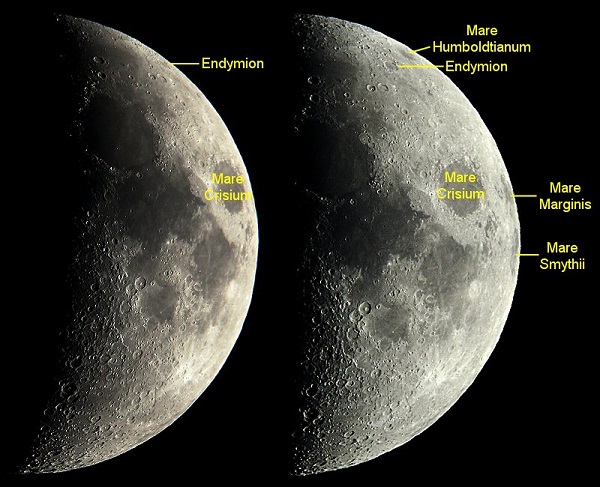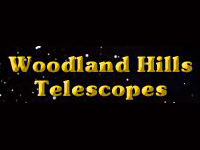April 1- 30, 2016 
Three lunar challenges in one! Learn more about the Moon.
For GAM2016, we will be running a series of Observing Challenges, developed by The Astronomical League. Whether you are a complete novice to astronomy or a seasoned veteran there will be something for you! Some of the challenges can be done in a night and some will take the whole month.
If you are a sidewalk astronomer or part of an astronomy club you might like to run events to help people complete the challenges. If are planning an Observing Challenge event, don't forget to register your event!
Discuss your observations, ask and answer questions and meet fellow astronomers working on these challenges from around the world in our forum.
Share your photos from this challenge with us and the world on Facebook, or Tweet using #GAM2016 hashtag (@gam_awb).
The “Big Moon” Illusion
Casual skywatchers since the time of the ancient Greeks have seen the rising Moon as appearing much larger than after it has climbed higher in the sky. The Moon is often portrayed in film and television as being very large and bright when it is near the horizon. All this flies in the face of the fact that the actual apparent size of the Moon, whether it is rising or it is at its highest point in the sky is quite small. Extend your arm and outstretch your hand. The Moon’s apparent diameter is about 1/4 the width of your index finger.
The common explanation of the “Big Moon” illusion is that when the Moon’s apparent size is compared to familiar landscape objects, such as distant houses and trees, our mind interprets the Moon as being quite large. However, when it moves higher in the sky, there are no nearby comparison objects. The Moon’s apparent size then appears to shrink, and it seems to lie much farther away. While sounding plausible, this reasoning does not explain why the same effect occurs at the beach when the Moon is seen hovering just above a flat, featureless ocean horizon, or in the desert when the Moon is cast against sweeping sand formations. Studies have sought a deeper psychological explanation.
See the big Moon illusion for yourself on the evening of the full Moon, April 22, or the next evening, April 23. From a location that has a low horizon line, look to the east at sunset for the rising Moon.
1. Isolate the Moon by viewing it through a narrow tube, such as a drinking straw. Note its size compared to the tube’s field of view. Wait two hours or more and repeat the observation.
2. Use a digital camera at full optical zoom and take an image of the rising Moon. Be sure the camera is properly focused and that the image is not overexposed. Again, wait a couple of hours, then take another image. Download both images on a computer and view them at the same image scale.
Are the Moon sizes the same?
Compare the size difference between the Moon at apogee and perigee
A direct comparison between the apparent sizes of the Moon when it is near perigee (the Moon’s closest point to Earth) and when it reaches apogee (the Moon’s farthest point) can be made.
Perigee occurs on April 7 when the Moon is at its new phase and, consequently, appears very close to the sun. Measurements taken three days earlier on April 4 or three days later on April 10 will suffice for this activity. Simply take a digital photo of the Moon on either of those two days (April 4 or 10) and also on the night of apogee, April 21. Use the camera’s full optical zoom feature, and make sure the lens is properly focused. (Try using a manual focus set on infinity.) Be careful not to overexpose the images.
Directly compare the apogee and near perigee Moon sizes on a computer using the same image scale. The April 21 near full Moon image will be found to be about 10% smaller than either the April 4 or April 10 images.
Discover lunar libration, seeing the far side of the Moon
One interesting consequence of the Moon’s elliptical orbit is the phenomenon known as libration (slight 'wobbling' of the Moon). The Moon presents the same hemisphere toward Earth as it orbits our planet. Therefore, we always see its same side, we never see the far side. Strangely though, during each month, we are able to observe about 59% of the lunar surface.
Libration during the month:
- April 12, 13, and 14, northeastern limb maximum
- April 21 and 22; neutral (near full Moon)
- April 1, 2, 28, and 29; southwestern limb maximum (On these dates, Mare Crisium near the northeastern edge lies in darkness and can’t be seen)
The Moon traces an elliptical path around Earth. One of the features of a body moving in an elliptical orbit is that, when it is nearer to the parent body, it moves faster, and when it is farther, it moves slower. Therefore, the Moon moves slowest at apogee and fastest at perigee. All the while, the Moon rotates at a constant rate, completing one full rotation every lunar orbit. As a result of these two factors – the changing speed of the Moon in its orbital path and its constant rotational rate — plus the changing curvature of its elliptical path, observers on Earth are able, at times, to see slightly around the western limb of the Moon, and, at other times, to see slightly around the eastern limb. This is an east-west libration.
There is also a north-south component, because, at times, the Moon is either slightly above or below the ecliptic, permitting observers on Earth to see slightly over the Moon’s south or north polar regions, respectively.
Observe Mare Crisium and photograph it using a digital camera at full optical zoom. Be sure to focus the camera and be careful not to overexpose the image. Do this on April 12, 13, or 14 just before first quarter and again on April 20 or 21 before full phase. Download the two images on a computer displaying the same image scale. Closely examine the lunar surface from the eastern edge of the mare to the limb and note its relative distance. The April 20/21 image should show less area than the April 12/13/14 image. Mare Marginis, normally lying right on the eastern rim, should be seen on the image taken on April 12/13/14, but not on the April 20/21 image.

Moon libration. Note the change in position of Mare Crisium. Image from Observational Astronomy by David Haworth.
Share your images and observations with the world on Facebook, or Tweet using #GAM2016 hashtag (@gam_awb).









